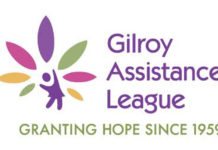GILROY
– Gilroy’s highest achieving students are not improving as much
as students performing at lower levels, who have made breakthrough
progress. In the three years since the district set its bold goals
of having 90 percent of students at grade level by this summer, a
disproportionate number of top stu
dents haven’t improved, or have actually lowered their test
scores.
GILROY – Gilroy’s highest achieving students are not improving as much as students performing at lower levels, who have made breakthrough progress. In the three years since the district set its bold goals of having 90 percent of students at grade level by this summer, a disproportionate number of top students haven’t improved, or have actually lowered their test scores.
As the school board brings its two-month-long strategic planning to a close tonight, it will approve a mission statement that vows to leave no student behind.
The problem with one of Gilroy Unified School District’s current student achievement goals – that no student subgroup will perform more than 5 percent below any other group – seems to have left the district’s highest achieving students behind, district officials and trustees say.
Data-driven Superintendent Edwin Diaz presented core planners, parents and students with charts and figures to show where students continue to lag behind, and high-performers, in general, are staying the same or doing worse.
“We don’t want (low-performing and high-performing students) to meet somewhere where they’re not both improving,” Diaz told trustees during a May 8 study session.
For example, the district looked at the students who made “a drop to be concerned about” on standardized tests, Diaz said, or one that would drop them one tier on a five-tier scale. Of 1,002 students in grades 2-11 who scored in the second – below basic – level on a district-wide test in 2001-02, 16.7 percent made a significant drop by this year. In comparison, 33.3 percent of 600 students scoring in the fourth tier and 31 percent of 429 students in the fifth tier had the same significant decrease. The district tracked the same students over the three-year period.
The difference between low- and high-performing English Language Learners was much more pronounced, while for native English speakers it was slightly less. The trends were roughly the same on other tests, too.
“Based on multiple assessments, the conclusion we draw from this is, when you look at kids at or above grade level, we need to be concerned about the kids that are not continuing to increase,” Diaz said.
While it is difficult to make impressive gains with students who are already above the norm, Diaz noted, they should still be able to improve.
Diaz is also pointing to district-wide writing scores and the performance of all secondary students – particularly Gilroy High School math students – as two other areas of concern.
Over the past two years, GUSD has not seen an increase in the number of students passing the district writing test – 40 percent.
Of elementary, middle and high school students taking reading and math tests, GHS math students had the biggest drop in scores. Twenty-six percent were at or above grade level last spring, compared with 19 percent of those same students this spring.
“This is not the aggressive type of growth we’re looking for,” Diaz said. “It’s interesting how we’re having a significant growth at the elementary level. I guess the fact is, as we better prepare the kids at the elementary and middle school level, the program at the secondary level has to kick it up a notch.”
Some other data trustees perused:
• More GHS students failed Advanced Placement tests than those across the country last year in all but two out of 11 subjects
• Although Gilroy saw a notable 20-point increase in average SAT scores last year, scores have declined since 1997, while scores at Live Oak High School in Morgan Hill, the county, state and national levels have risen.
• 15 percent of GHS seniors scored above 1,000 on the SAT last year; 27 percent of Live Oak seniors did, compared to 17 percent for GHS in 1987 and 24 percent for Live Oak in 1987.
During the study session for examining district data, the school board also pointed out how far Gilroy students have come in recent years. All GUSD schools met or exceeded their improvement targets set by the state in 2002-03. Last year, GUSD had the third-highest overall academic growth in the county.
“The critical factor is that we’re really targeting the students who need intervention,” said Jacki Horejs, assistant superintendent of educational services. “It’s kind of a combination of things.”
Diaz told trustees that, at this point, the data still must be examined in order to answer some provoking questions.
“Why are these kids not making some improvement, or in some cases, why are they going down?” Diaz asked. “What are the things around those kids making them not grow? As a district, we should have that information.”
Trustees and district officials offered a few reasons outside of the instructional program for the high school students’ low performance. For one, high schoolers may be overwhelmed with tests and as a result aren’t taking them seriously. Also, GHS parents often are not as aware as elementary and middle school parents of the tests, why tests are taken, and what their students’ goals should be.
With all that in mind, the board continues to hash out its mission statement and set new goals for 2004-07. Given the areas of concern presented by the district data, the Strategic Plan, set to be approved tonight, will likely emphasize continually improving teaching and learning for all students, with an emphasis on all.














